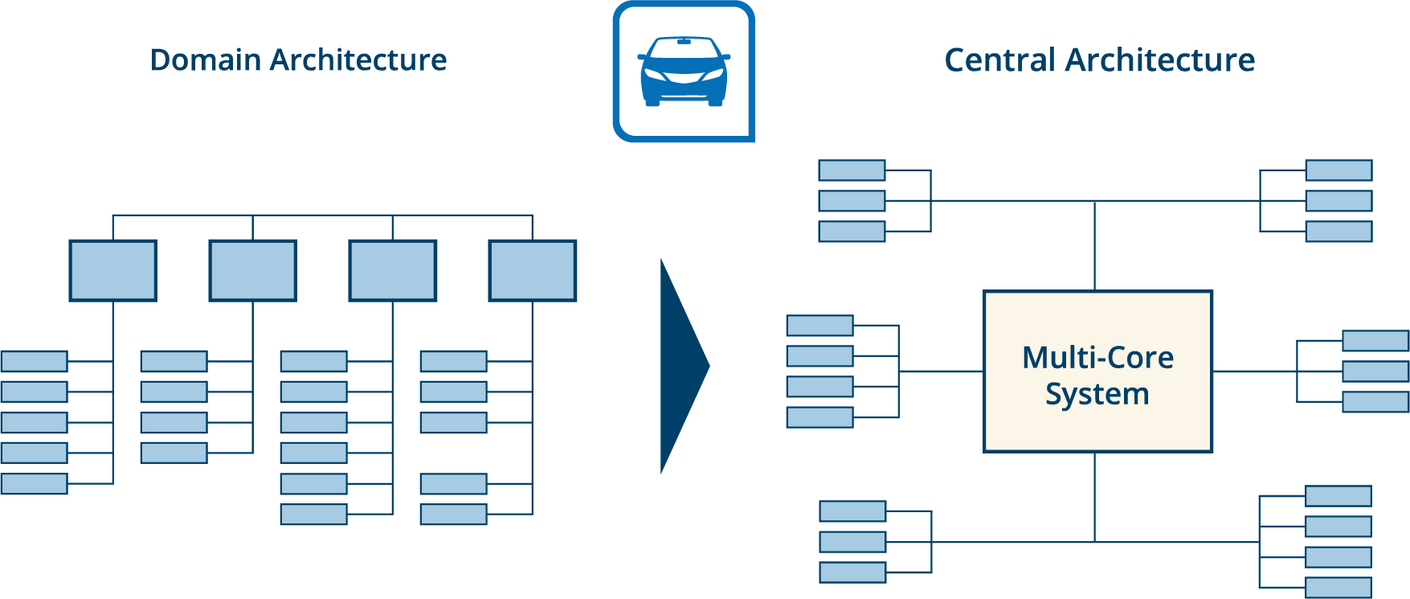Para-virtualized Driver Implementation
PikeOS incorporates VirtIO para-virtualized drivers to manage I/O devices more efficiently than traditional device drivers. Para-virtualization in this context involves modifying PikeOS to use VirtIO’s API, enabling direct communication between the OS and the hypervisor’s I/O stack. This is achieved through:
- Virtqueues: Used for buffering the data between PikeOS and the hypervisor, reducing the overhead typically associated with data transfers in virtualized environments
- Event Indexes: Enhancements in the VirtIO specification that allow for more efficient signaling between the guest and host, minimizing the interrupt handling which is critical for maintaining real-time performance in PikeOS
Configuration and Management
PikeOS manages VirtIO devices through a configuration space provided by VirtIO. This space allows PikeOS to:
- Retrieve information about the VirtIO device
- Configure device-specific parameters that are essential for operation
- Monitor and manage the state of the device dynamically, which is crucial for systems requiring high reliability and flexibility in resource management
Feature Negotiation
During the initialization phase, PikeOS and the hypervisor negotiate the features supported by both the VirtIO device and the OS. This negotiation ensures that only compatible and optimized features are enabled, thus maintaining system integrity and performance. The feature negotiation mechanism is crucial for adapting to various versions of VirtIO and ensuring backward compatibility
Efficient Interrupt Handling
PikeOS utilizes VirtIO’s efficient interrupt handling mechanisms, which are designed to reduce the frequency of interrupts during normal operation. This approach helps in maintaining the real-time performance characteristics of PikeOS by minimizing context switches and CPU overhead associated with interrupt processing
Security and Isolation
Given PikeOS's focus on Safety and Security, the integration with VirtIO also considers secure isolation of device access. PikeOS leverages VirtIO’s ability to partition device access based on the guest OS's credentials and roles, ensuring that each partition only accesses devices pertinent to its operations, thereby adhering to the stringent Security policies typical in Safety-critical environments
Development and Testing Tools
For development and testing, PikeOS uses VirtIO to simulate various hardware configurations in a controlled environment. This capability allows developers to:
- Deploy and test PikeOS configurations with different types of virtualized devices without the need for physical hardware
- Debug and optimize system performance using VirtIO’s extensive logging and diagnostic tools
Safety and Security Domains
VirtIO provides robust mechanisms for ensuring that applications operate within their designated Safety and Security parameters. By enforcing strict isolation between different operational domains, VirtIO helps to prevent unauthorized access and interactions, thereby upholding the integrity and confidentiality of critical data and operations across various applications.
Independent Software Modules
VirtIO facilitates the integration of diverse software modules, spanning various application domains and development timelines, into a cohesive system. This integration supports both legacy systems and new developments, ensuring that they can operate seamlessly within the same virtualized environment, thus preserving investment in existing software while embracing new innovations.
Minimized Influence
VirtIO's architecture minimizes the interference between different software modules operating within the same system. By reducing the cross-impact of disparate operations, systems achieve more stable and predictable performance, enhancing the overall reliability and usability of the software environment.
Maximize parallel and independent Development
VirtIO supports a development model where multiple teams can work in parallel on different system components or applications without dependency conflicts. This capability enhances the speed of development cycles, allows for more rapid iteration and testing of new features, and reduces time to market for new functionalities.
Streamlined Cloud I/O for Multi-OS Deployment
Facilitates efficient virtualized I/O operations in Cloud environments, enabling developers to concurrently deploy and test applications across multiple operating systems within the same virtual infrastructure. This is achieved through a standardized interface that ensures compatibility and optimal performance across diverse OS platforms, streamlining development cycles and reducing hardware dependencies.
Seamless Edge-to-Cloud Portability
VirtIO supports easy portability from Edge devices to the Cloud. This is because it abstracts the hardware-specific I/O operations, allowing the same controller software to operate seamlessly both on local devices (Edge) and in Cloud environments without needing significant modifications.

